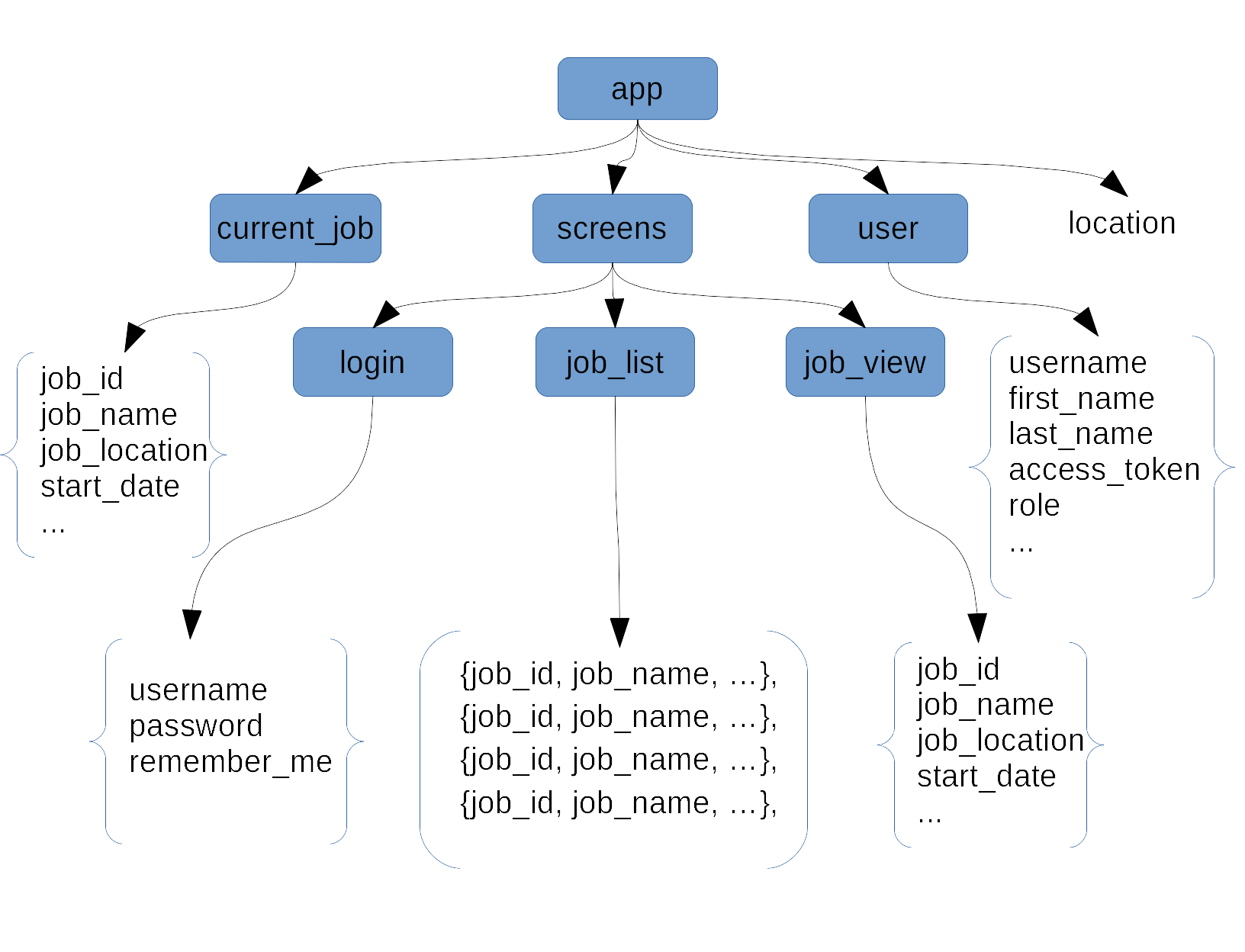Theory and Design
ApplicationState, as it's name implies, is used for maintaining state in applications. It is a different approach to solving the classic problem, and is language agnostic though this implementation is in JavaScript.
Over the years many patterns have emerged in software architecture - all trying to solve the same fundamental problem: maintain state, and react to changes in state.
Even the simplest "hello world" application can be thought of in these terms:
1 2 | let message = "hello, world!"; console.log(message); |
In this case, we're declaring an inital state - i.e. setting some data region in memory to "hello, world!", and then subsequently changing the state of the user's command line by emitting the message.
As applications become larger state management becomes more complex. Over the years there have been many formal and informal approaches to solving the state problem, some examples are MVC, MVP, MVVM, Reactive, etc... the definitions get fuzzy at times and overlap, but they all have one thing in common - there's some sort of state that's maintained and changes to that state cause the application to change somehow. There are advantages and disadvantages to each approach, theories of code decoupling, event driven approaches, etc...
Instead of discrete models, ApplicationState recogizes that the entire state of any application can be represented as a directed acyclic graph, where each node in the graph itentifies some part of the application and each leaf contains a discrete value. (Actually, nodes can be pointers to other nodes, but this is a convenience sugaring covered in advanced topics).
Here's a simple example. Imagine an application that has a simple login form, a list of jobs, and a screen that can be used to view or edit a job.
Here's a rough graph of what the overall state of that application might look like:

In the above graph, the root node is "app", with a leaf called "location" and three child nodes, "user","screen" and "current_job".
Under the user node we have some leaves with values for things like username and access_token, under "screen" we have "login", "job_list" and "job_view_edit", etc...
Using the above graph, any part of the application state can be represented using simple dotted notation. For example:
1 2 3 | app.location app.screen.login.username app.user.access_token |
With application state, this is how you both set and retrieve values.
At this point, it's natural to wonder what value this approach takes above a simple object that can be represented in any language. That brings us to the second part of the ApplicationState theory, which is responding to changes.
Imagine that you need to validate that a username is valid after a user has entered it. Using ApplicationState, you'd add a listener to app.screen.login.username to be notified of the change, run the validation and mutate the UI in response.
Followers of reactive application flow will be very familiar with this approach. One of the advantages to the ApplicationState approach, however, is the ability to add a listener to any node or leaf in the graph and to be notified of changes that have occurred in the subgraph.
For example, maybe your application would like to keep a log of all changes that occurred when a job was being edited. Adding a listener to app.screen.job_view_edit would accomplish this trivially.
The key architectural insight of ApplicationState is that ALL of your UI state is represented by the graph and can be instantly stored and retrieved. This is particularly useful, for example, in mobile applications where the application can be killed and restarted at any time, and the expectation is that state will be restored properly.
In the BARE architecture repo, there is documentation about how ApplicationState can fit into an overall reactive architecture, though it should be noted that ApplicationState is not limited to BARE and can be used easily with React, React Native, etc...
This is a brief summary of the ApplicationState theory, there is a lot more to it with tons of handy featues like:
- Previous state / undo
- Linked nodes
- Plugins for persistence, loading and additional functionality (see applicationstate-plugins-indexeddb for persistence and loading from IndexedDB in the browser)
- Notification control
Future features will include:
- Isomorphism plugin - automatic sync to the server
- Merkle tree implementation for auto change detection/tree syncing
- Sub graph splitting and merging
- Cloud functions that respond to listeners/changes using AWS lambda, Google cloud functions, etc...
Once the above features are implemented, many applications will be able to full implemented "serverless"